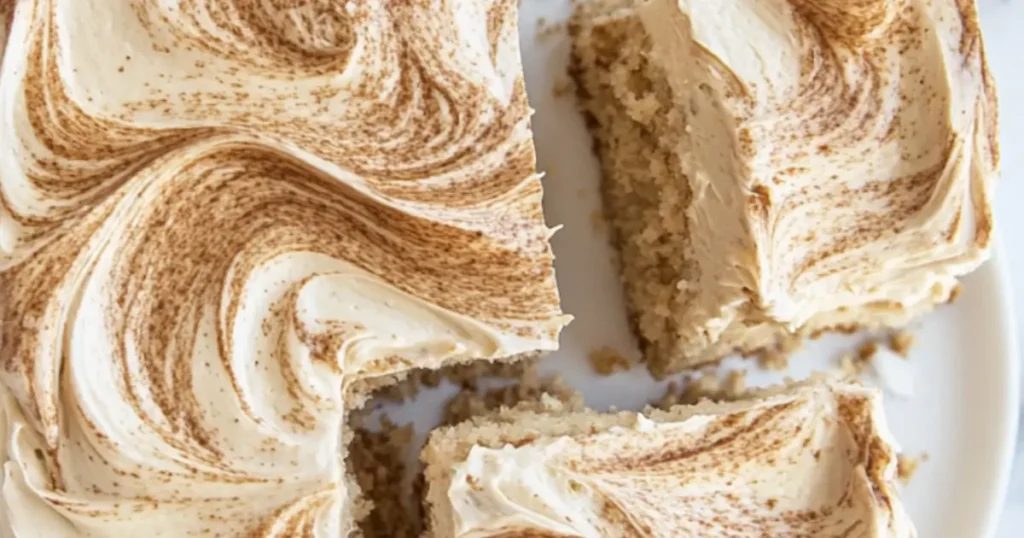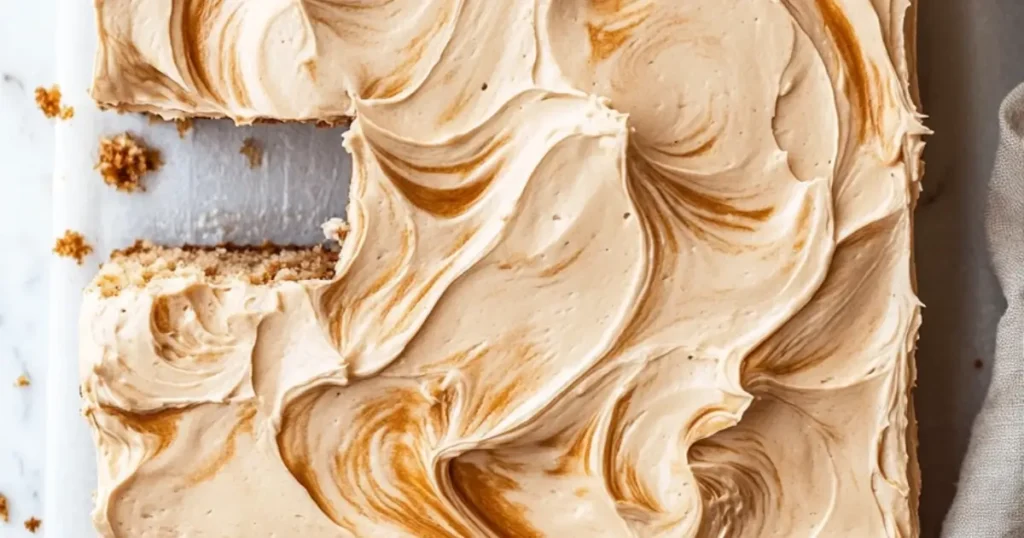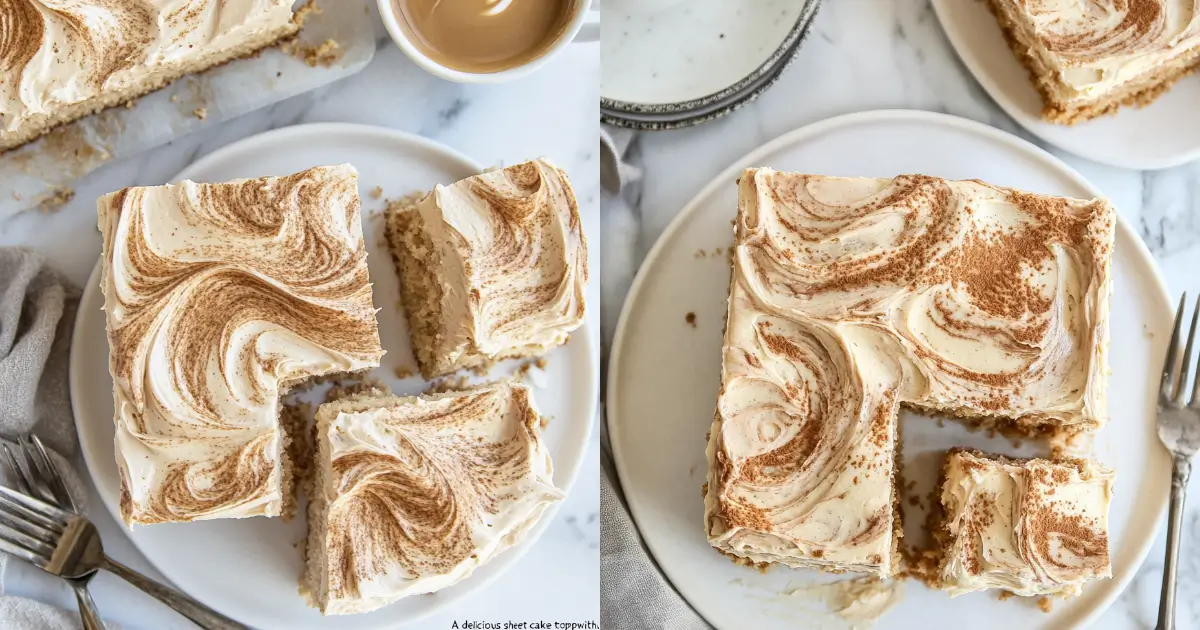There’s something comforting about a warm, moist banana cake. But what if your cake turns out dense and heavy instead of light and fluffy? Let’s You will realize common reasons behind dense banana cake and how to fix them. We’ll also suggest internal links from Recipes Hurry to enrich your banana cake baking journey. Why Is My Banana Cake Not Fluffy? So let’s learn more.
But what if your cake turns out dense and heavy instead of light, fluffy, and melt-in-your-mouth delicious? If you’ve ever found yourself asking, “Why is my banana cake not fluffy?” you’re not alone. Baking can be tricky, especially when working with ingredients like bananas that add moisture but can also weigh down the batter if not used correctly.
In this guide, we’ll You will realize the most common reasons behind dense banana cake, from overmixing the batter to using the wrong flour, and how to fix these issues. You’ll also find expert tips and tricks to include your banana cake turns out perfectly soft, airy, and irresistible every time—because dessert should always be a treat worth savoring.
Table of Contents
Avoid Overmixing the Banana Cake Batter
Why is my banana cake not fluffy Banana cake batter is a delicate balance of wet and dry ingredients. Overmixing activates the gluten in the flour, resulting in a dense, tough texture instead of the light, tender crumb you’re aiming for. This is especially important when using all-purpose flour, which contains more gluten than cake flour.
What to Do Instead:
Mix the batter only until just combined. When the wet and dry ingredients meet, use a gentle folding motion with a spatula or wooden spoon. Stop mixing as soon as you no longer see streaks of dry flour. Resist the urge to beat the batter until smooth—lumps are perfectly fine in banana cake batter and help maintain its airy texture.
Pro Tip:
Use a spatula instead of a whisk when combining the ingredients. A spatula allows for more controlled mixing and minimizes the risk of overworking the batter. If you’re using an electric mixer, stick to the lowest speed and stop mixing as soon as the ingredients are incorporated. Remember, a light hand makes for a lighter cake.

Use Overripe Bananas the Right Way
Mash Bananas the Right Way
Yes, those overripe, spotty bananas are perfect for baking thanks to their natural sweetness and moisture. However, how you mash them can significantly impact your banana cake’s texture. If you mash them too much or blend them into a liquid purée, you risk adding excess moisture, making your cake dense and soggy. On the other hand, leaving the bananas too chunky can create uneven pockets in the cake, causing inconsistent texture.
What to Do Instead:
Mash the bananas until they’re mostly smooth but still have a few small chunks. This creates the perfect balance—providing moisture while adding subtle bursts of banana flavor throughout the cake. Use a fork or potato masher to control the consistency better. Avoid using a blender or food processor, as these tools tend to create a purée that can throw off the cake’s moisture balance.
Pro Tip:
Always measure the mashed bananas before adding them to the batter. Even a small amount of extra banana can weigh down the batter and alter the cake’s texture. Most recipes call for about 1 to 1 1/2 cups of mashed bananas (approximately 3 medium bananas), but double-check your recipe for accuracy. If you have extra mashed bananas, save them for another recipe like smoothies or banana pancakes!
Add the Correct Amount of Leavening Agents
Leavening agents like baking powder and baking soda are the magic behind a light and airy banana cake. They create carbon dioxide bubbles when they react with acidic ingredients like bananas, helping the cake rise as it bakes. If you skimp on these crucial ingredients or use old, expired ones, your cake may turn out flat, dense, and heavy. On the flip side, using too much can cause the cake to rise quickly and then collapse, leaving a sunken center.
What to Do Instead:
Double-check your baking powder and baking soda measurements before adding them to the batter. Be precise—baking is a science, and even a small miscalculation can affect the cake’s rise. Make sure your baking powder and baking soda are fresh; outdated leavening agents lose their potency over time, rendering them useless. A good rule of thumb is to replace these every six months to a year.
Pro Tip:
Sift the dry ingredients, including the leavening agents, to include even distribution throughout the batter. This helps prevent uneven pockets of rising and results in a more consistent texture. If you’re unsure about the freshness of your baking powder, test it by adding a teaspoon to a cup of hot water—if it bubbles vigorously, it’s still good. Similarly, you can test baking soda by mixing it with vinegar.
Bake the Banana Cake at the Right Temperature
Baking temperature plays a critical role in achieving the perfect banana cake. If the oven temperature is too low, the cake will rise slowly, resulting in a dense, heavy texture. If the temperature is too high, the edges will cook too quickly while the center remains underbaked, leading to an uneven cake that may sink in the middle. Banana cake requires a steady temperature for a consistent rise and a tender crumb.
What to Do Instead:
Always preheat your oven before baking to include it’s at the correct temperature when you put the cake in. Most banana cake recipes call for a baking temperature of 350°F (175°C), which strikes the right balance between cooking the cake through and allowing it to rise properly. If your oven tends to run hot or cold, consider using an oven thermometer to check its accuracy and adjust accordingly.
Pro Tip:
Resist the temptation to open the oven door frequently while baking. Each time you open it, heat escapes, causing temperature fluctuations that can hinder the cake’s rise and create an uneven texture. If you need to check for doneness, wait until the last 10-15 minutes of baking and use the oven light or open the door briefly. Test the cake by inserting a toothpick or skewer into the center—if it comes out clean or with just a few moist crumbs, the cake is ready.

Cream Butter and Sugar Properly for a Fluffy Banana Cake
One of the most important steps in making a light and fluffy banana cake is creaming the butter and sugar. This process incorporates air into the batter, creating tiny air pockets that expand as the cake bakes, resulting in a soft, airy texture. Skipping this step or rushing through it can leave you with a dense and heavy cake, no matter how well you mix the rest of the batter.
What to Do Instead:
Take your time when creaming the butter and sugar. Use a stand mixer or hand mixer on medium-high speed for at least 3-4 minutes, or until the mixture turns pale, light, and fluffy. You should notice the volume increasing as the mixture traps air. Be sure to scrape down the sides of the bowl occasionally to include even mixing.
Pro Tip:
Use room-temperature butter for the best results. Cold butter won’t cream properly, while overly softened butter can’t trap air as effectively. Room-temperature butter should be soft enough to press with your finger but still hold its shape. If you forget to take the butter out ahead of time, cut it into small cubes and let it sit at room temperature for about 15-20 minutes, or soften it slightly in the microwave on a low setting (be careful not to melt it!).
Choose the Right Flour for Banana Cake Recipes
Not all flours are created equal. All-purpose flour works best for banana cake, but using whole wheat or bread flour can lead to a dense cake.
What to Do Instead:
Stick with all-purpose flour unless the recipe specifies otherwise. Measure carefully using the spoon-and-level method.
Pro Tip: Avoid packing the flour into the measuring cup; it can add more flour than intended.
Keep Extras in the Batter to a Minimum
While nuts, chocolate chips, and dried fruits are tasty, adding too much can weigh down your cake.
What to Do Instead:
Stick to moderate amounts of add-ins—around 1/2 to 3/4 cup total.
Pro Tip: Toss add-ins with a bit of flour before folding them into the batter. It prevents sinking.
Use Room-Temperature Ingredients for Better Mixing
Cold eggs, butter, or milk can cause the batter to seize up, leading to uneven texture.
What to Do Instead:
Let all your ingredients come to room temperature before starting.
Pro Tip: If you forget, place eggs in a bowl of warm water for 5-10 minutes.
Avoid Overbaking the Banana Cake
Overbaking dries out your banana cake, making it dense and crumbly instead of moist and fluffy.
What to Do Instead:
Start checking the cake 5-7 minutes before the suggested bake time. Insert a toothpick—it should come out clean or with a few moist crumbs.
Pro Tip: Let the cake cool in the pan for 10-15 minutes before transferring it to a wire rack.
For another mouth-watering banana cake recipe, check out Banana Flip Cake Recipe: Moist, Sweet, and Caramelized Delight on Recipes Hurry.
FAQs About Banana Cake Baking
Why is my banana cake sinking in the middle?
This could be due to underbaking, opening the oven door too soon, or too much leavening agent.
Can I use frozen bananas for banana cake?
Yes! Thaw and drain any excess liquid first to avoid a soggy batter.
Why does my banana cake taste bitter?
Old or too much baking soda could be the culprit. Use fresh ingredients and measure accurately.
Can I fix a dense banana cake after baking?
Unfortunately, no. However, serve it as a banana bread-style loaf or warm it with a scoop of ice cream to make it more enjoyable.
How do I store banana cake?
Store it in an airtight container at room temperature for up to 3 days or refrigerate for a longer shelf life.
Final Thoughts on Baking the Best Banana Cake
Baking the perfect banana cake is all about balance—finding the right mix of ingredients, using proper techniques, and maintaining a consistent baking environment. Every step, from choosing ripe bananas and measuring ingredients accurately to creaming butter and sugar and baking at the right temperature, plays a crucial role in creating a cake that’s light, moist, and bursting with banana flavor.
Don’t rush the process or skip essential steps like sifting dry ingredients or preheating the oven. Small adjustments, like using room-temperature butter or measuring mashed bananas precisely, can make a world of difference in the final result. And remember, baking is both art and science—practice makes perfect!
By following these tips and paying attention to details, you’ll be serving up a fluffy, tender banana cake that’s sure to impress. Whether you’re baking for a special occasion or simply indulging in a cozy homemade treat, your perfectly baked banana cake will be the star of any dessert table. So grab those ripe bananas, preheat the oven, and get ready to bake something truly delicious.


Mouth watring, looks yammy